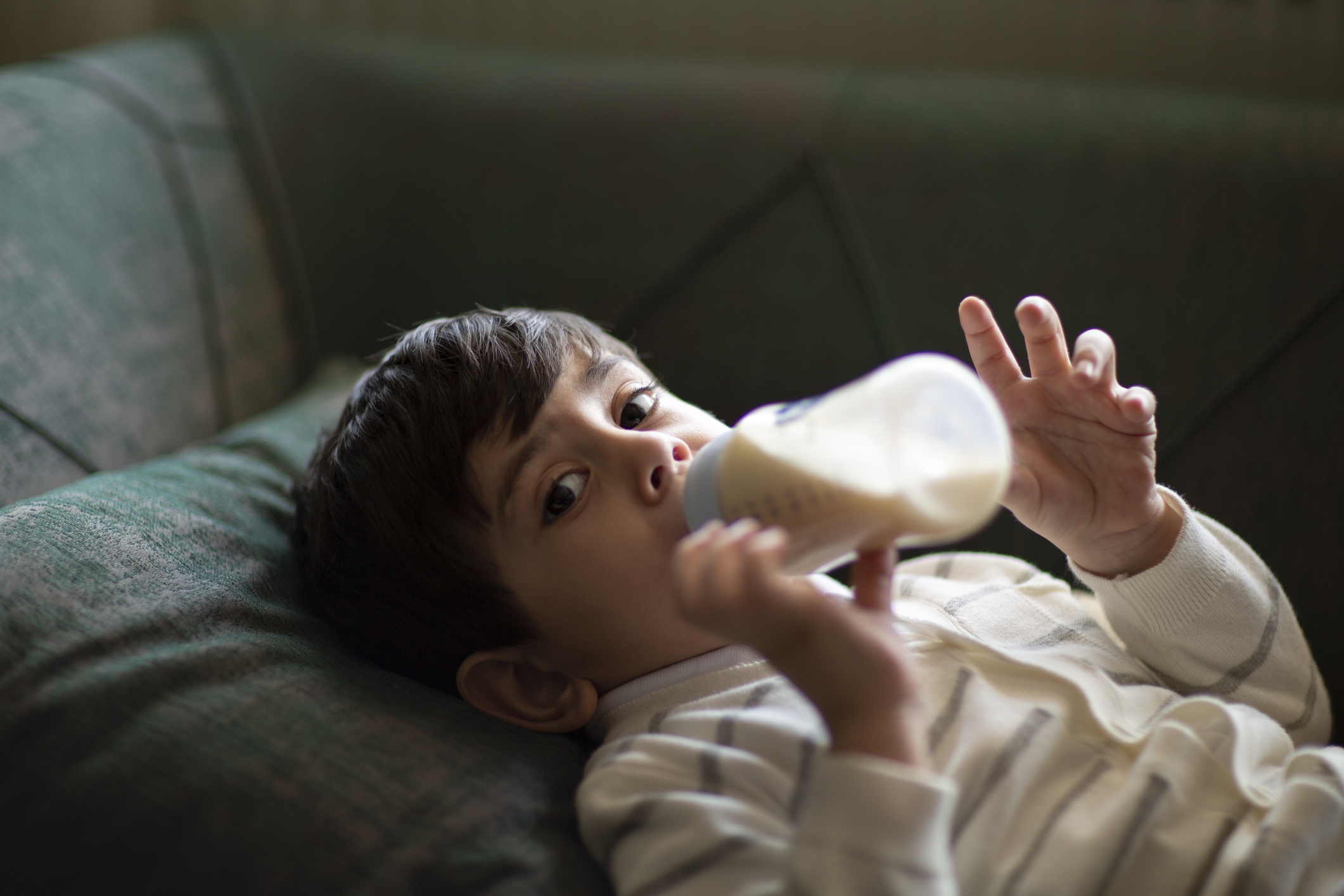
Parents often ask when they should transition their babies from drinking out of a bottle to drinking out of a cup or a sippy cup.
Weaning a baby off a bottle is one of those things that's easier to talk about than to actually do. I see kids as old as 3 sometimes still with a bottle, and parents tell me that the kids cry and won't drink out of anything else. They're worried that their child will get dehydrated or won't get their milk intake in if they don't give in and let their child have the bottle. I always tell parents that if you give in to your child's demands, they are winning the power struggle. Not you.
When to Transition Your Toddler from Bottle to Cup
Most babies can start transitioning from a bottle to a sippy cup as young as 9 months old. By 18 months, they should be weaned off the bottle completely. Start with the bottles during the day because the bedtime bottle will be the one your child will have the hardest time giving up. It's become part of their bedtime routine, and they'll fight you most on that one.
Dangers of Prolonged Bottle Use in Children
Prolonged bottle use results in something dentists call "baby bottle cavities." Milk sugars sit on the teeth and bacteria use that sugar as food leading to cavities. Prolonged bottle use is one of the biggest reasons little kids need caps or other dental work at such a young age.
Nutritional Issues
Other problems with prolonged bottle use include iron deficiency anemia and toddler obesity. Why? Kids would rather drink their calories. Kids will drink more than you think if you just keep filling the bottle and letting them walk around with it. This causes increased calorie intake with milk.
They don't eat as much real food, and then the parents come into the clinic concerned that their child isn't eating and has a problem with food. Well, the problem is they're loading up on milk and not hungry for anything else.
Milk has no iron, and if they aren't eating iron-rich foods, that can contribute to anemia. The calcium in milk also competes for iron on the red blood cells, and that too contributes to anemia.
After age 1, kids don't need more than 16 to 20 ounces of milk per day.
Dental Issues
The American Dental Association also warns that cavity-causing bacteria can also be passed from a caregiver to a baby through saliva. So don't clean your baby's pacifier or feeding spoon with your own mouth. I know it sounds gross, but I've seen lots of parents do it right in front of me in the clinic.
Strategies for Bottle Weaning
So how do you get your child off the bottle? Start by eliminating one bottle feeding a day and instead offer milk in a sippy cup. Serve the milk with meals and don't let your child carry around a bottle with them. This way, they learn that milk is with meals. And then if they are old enough, let them have small cups of water during the day.
Children 6 to 12 months can have up to 4 ounces of water in a 24-hour period. Children 1 to 2 years old can have 8 ounces of water per day. And children age 2 to 3 can have 16 ounces of water per day.
Some kids do well with the Bottle Fairy coming to their house and taking all their bottles to newborn babies who need them. The Bottle Fairy then gives them big kid sippy cups to drink from.
If your child is still on the bottle after 2 years old, and you're struggling to get them off the bottle, talk to your child's pediatrician about other ways to help.
updated: October 9, 2023
originally published: August 17, 2020
Winning the Bedtime Battle: How to Help Kids Sleep Better
Bedtime battles are common, but a consistent sleep routine can make a world of difference. Pediatrician Cindy Gellner, MD, talks about why sleep schedules matter, how to handle common bedtime struggles, and when to seek medical advice for your child's sleep issues.
How to Handle Screen Related Temper Issues in Children
Is your child's screen time causing more tantrums? Pediatrician Cindy Gellner, MD, reveals how excessive digital exposure can lead to emotional challenges in kids.
More Answers to Your Questions on Keeping Your Kid Healthy
Latest trends and issues in children's health on the Healthy Kids Zone with Dr. Cindy Gellner






